Lesson Nine
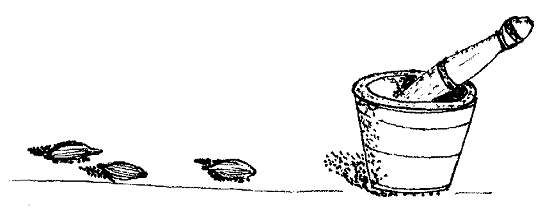
Dialogue nine: Multiplying language learning
L: daa tsu dee? What is this? | دا څۀ دى؟ |
H: daa langrúy da. It is a mortar. | دا لنګرۍ ده. |
L: daa du tsu du paara pukaar raazee? What is it needed for? | دا د څۀ د پاره پکار راځى؟ |
H: daa du laachée maatawúlo aw du chuTnúy joRawúlo du paara pukáar raazée This is needed for crushing cardamom and making chutnay. | دا د لاچى ماتولو او د چټنئ جوړولو د پاره پکار راځى. |
L: daa du kum zaay joRa da? Where is it made? | دا د کُوم ځائ جوړه ده؟ |
H: daa du laahór joRa da. It's made in Lahore | دا د لاهور جوړه ده. |
L: daa du tsu na jóRa da? What is it made of? | دا د څۀ نه جوړه ده؟ |
H: daa du gaTé na jóRa da. It's made of stone. | دا د ګټې نه جوړه ده. |
L: chuTnée tsu shay day? What is chutnay? | چټنى څۀ شے دے؟ |
H: chuTnée du khwaraak tseez day, aw khalak ye du hazme du páara khoree. Dera traskóona wee. Chutney is a kind of food and people eat it for digestion. It's very tasty. | چټنى د خوراک څيز دے، او خلق يې د هضمې د پاره خورى. ډېره ترسکُونه وى. |
L: pu de chuTnée tsínga joRegee? How is chutnay made (lit. 'made by it')? | په دې چټنى څنګه جوړېږى؟ |
NOTE:
👆 Memorise a few of these learners’ questions and take a small recorder to your friend’s house. Record a few replies. When you get home transcribe the answers in phonetics and then get your helper to explain the answers to you. Try to do this weekly with new topics.
You might get a reply like this from the last question in the Dialogue above:
| awál ba marchakáy raawaakhle. | First you will bring some peppers. | اول به مرچکے راواخلې. |
| aw pu du ke ba ye kegde. | And you will put them in it. | او په دې کښې به يې کېږدې. |
| byaa ba ye pu chaTóo ke óoTuke. | Then you will hit them with a pestle. | بيا به يې په چټو کښې وټکې. |
| byaa ba pu ke TamaaTúr waachawe. | Then you will put tomatoes in it. | بيا به په کښې ټماټر واچوې. |
| aw hagha hum kuT kRa. | And grind them also. | او هغه هم کټ کړه. |
| lug saat pas ba chuTnée tayaara wee. | A little time later chutnay will be ready. | لږ ساعت پس به چټنى تياره وى. |
| daa kaar tsok kawee? | Who does this work? | دا کار څوک کوى؟ |
| daa du zanaanawo kaar day. | It is ladies' work. | دا د زنانوو کار دے. |
Here are two useful phrases to prompt people to say things for the recorder:
| byaa óowaaya! | Say it again! | بيا ووايه! |
| daa jawáab ba pu Tep óowaaye? | Will you put that reply on tape? | دا جواب به په ټېپ ووائې؟ |
NOTE:
The word ټېپ - Tep is used of all forms of recording devices from audio cassettes to digital devices like MP3s.
Pronunciation drill
In this drill pay special attention to the غ - gh sound:
👆 Ask your helper to correct your pronunciation. Keep drilling until you have the same rhythm and pronunciation.
Try this tongue twister:
The preposition د - du (of) with feminine nouns and adjectives
| Possessive noun | Subject | Adjective | Verb | |||
|---|---|---|---|---|---|---|
du jeenúy | mor | khkÚle | da. | The girl's mother is beautiful. د جينۍ مور ښُکلې ده. | ||
du spogmúy | raNáa | téza | da. | The light of the moon is bright. د سپوږمۍ رڼا تېزه ده. | ||
du wúne | páaNe | shne | dee. | The leaves of the tree are green. د ونې پاڼې شنې دى. | ||
du pukhtaanó | hayáa | mushahóora | da. | The haya of Pukhtuns is famous. د پښتنو حيا مشهُوره ده. | ||
NOTE:
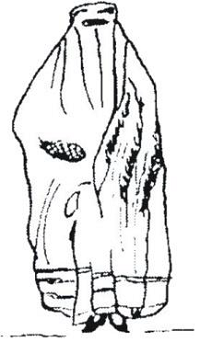
haya حیا - hayáa, like غیرت - ghayrát, has no exact English equivalent; and also, like غیرت - ghayrát, it has great cultural significance. hayaa includes the idea of modesty, respectful behaviour and the seclusion of women from public view.
Feminine nouns and adjectives in the oblique case
- Feminine singular nouns and adjectives ending in ـه - -a are inflected to ـې - -e in the oblique case, while their plural forms are inflected from ـې - -e to ـو - -o; nouns and adjectives ending in ـۍ - -uy are inflected to ـو - -o in the plural form only. See the following examples:
Nouns
| Direct | Oblique | Direct | Oblique | |
|---|---|---|---|---|
f.s. | spuy سپۍ | spuy سپۍ | khúza ښځه | khúze ښځې |
f.pl. | spuy سپۍ | spuyo سپیو | khúze ښځې | khúzo ښځو |
Adjectives
| Direct | Oblique | Direct | Oblique | |
|---|---|---|---|---|
f.s. | spéena سپینه | spéene سپینې | stúRe ستړې | stúRe ستړې |
f.pl. | spéene سپینې | spéeno سپینو | stúRe ستړې | stúRo ستړو |
f.s. | narúy نرۍ | narúy نرۍ | ||
f.pl. | narúy نرۍ | naró نرو |
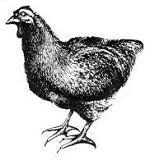
| daa zaRá wúna da. | This is an old tree. | دا زړه ونه ده. |
| du zaRé wúne mewá khwagá da. | The old tree's fruit is sweet. | د زړې ونې مېوه خوږه ده. |
| hágha múshre khúze haspatáal ta zee. | Those old ladies are going to the hospital. | هغه مشرې ښځې هسپتال ته ځى. |
| haghwée hágho múshro khúzo sara khaar ta zee. | They are going to the city with those old ladies. | هغوى هغو مشرو ښځو سره ښار ته ځى. |
| hágha zmoonga spéena chúrga da. | That is our white hen. | هغه زمُونږ سپينه چرګه ده. |
| hágha zmoong du spéene chúrge agúy da. | That is our white hen's egg. | هغه زمُونږ د سپينې چرګې اګۍ ده. |
| du khandaané tsalór chúrge dee. | Khandana has four hens. | د خندانې څلور چرګې دى. |
| du tsalóro chúrgo agúy gháTe dee. | The eggs of the four hens are large. | د څلورو چرګو اګۍ غټې دى. |
- Feminine singular nouns and adjectives ending in the suffix ـې - -e are not inflected in the oblique case, while their plural is inflected to ـو - -o.
| zmaa malúgre wúge da. | My (female) friend is hungry. | زما ملګرې وږې ده. |
| daa moTúr zmaa du malgúro day. | This car belongs to my friends. | دا موټر زما د ملګرو دے. |
| du de taalibilmáane stúRe dee. | Her (female) students are tired. | د دې طالبعلمانې ستړې دى. |
| du stúRo taalibilimáano Ustáaza hum stúRe da. | The tired students' teacher is also tired. | د ستړو طالبعلمانو اُستاذه هم ستړې ده. |
NOTE:
In the oblique case, numbers two through to ten change with the addition of the suffix ـو - -o; and یو - yo changes to یوې - yúwe. For example:
| du yúwe khúze | one woman's | د یوې ښځې |
| du dréo chúrgo | three hens' | د درېو چرګو |
| du lúso Ustaazáano | ten teachers' | د لسو اُستاذانو |
The transitive verbs خوړل - khoRúl (to eat) and څښل - skul (to drink)
- خوړل - khoRul (to eat, to consume)
| tu saháar Déra DoDúy khoré? | Do you eat a lot of food in the morning? | تۀ سحر ډېره ډوډۍ خورې؟ |
| na, saháar bas yúwa paraaTá khorúm. | No, in the morning I eat just a single paratha. | نه، سحر بس يوه پراټه خورم. |
| staaso malgúree ghwákha khoree? | Do your friends eat meat? | ستاسو ملګرى غوښه خورى؟ |
| na, haghwée ghwákha nú-khoree. | No, they don't eat meat. | نه، هغوى غوښه نۀ خورى. |
| du shpe tsu wakht DoDúy khoréy? | When do you eat food at night? | د شپې څۀ وخت ډوډۍ خورئ؟ |
| moong aatú bajé DoDúy khoróo. | We eat food at eight o'clock. | مُونږ اتۀ بجې ډوډۍ خورُو. |
| haghá wreejze hets-kula nú-khoree? | Does she never eat rice? | هغه وريژې هېڅ کله نۀ خورى؟ |
| na, haghá síraf aloogáan khorée. | No, she only eats potatoes. | نه، هغه صرف آلُوګان خورى. |
- څښل - skul (to drink, smoke)
| tu du shpe chaay ske? | Do you drink tea at night? | تۀ د شپې چائې څښې؟ |
| aw, du shpe qawá skum. | Yes, I drink green tea at night. | او، د شپې قهوه څښم. |
| táaso maa sara chaay skey? | Will you drink tea with me? | تاسو ما سره چائې څښئ؟ |
| mirabaanée, síraf oobú skum. | Thanks, I just drink water. | مِهربانى، صرف اوبۀ څکم. |
| táaso ba tsu skey, tóre chaay ku kawá? | What will you drink, black tea or green tea? | تاسو به څۀ څښئ تورې چائې کۀ قهوه؟ |
| khayr, tóre chaay ba skóo. | Fine, I'll drink black tea. | خیر، تورې چائې به څښُو. |
| day pu yúwawruz ke tsóomra sigríTe skee? | How many cigarettes does he smoke a day? | دے په يوه ورځ کښې څومره سګرټې څښى؟ |
NOTE:
kawa is green tea. It is a favourite in Khyber Pukhtunkhwa.
👆 Ask your language helper to show you the art of preparing kawa and have some together.
The preposition د ... نه - du ... na (from)
| staa plaar du kum zaay na pu Telefóon khabúre kawee? | Where is your father calling from on the phone? | ستا پلار د کُوم ځائ نه په ټيليفون خبرې کوى؟ |
| haghá du Taank na khabúre kawee. | He is calling from Tank. | هغه د ټانک نه خبرې کوى. |
| staa zooy tsu wakht du skool na kor ta raazée? | What time does your son come home from school? | ستا زوئ څۀ وخت د سکُول نه کور ته راځى؟ |
| haghá daa wakht du skool na raazée. | He comes from school at this time. | هغه دا وخت د سکُول نه راځى. |
| staa malgúray du kum mulk na dălta raazée? | Which country does your friend come here from? | ستا ملګرے د کُوم ملک نه دلته راځى؟ |
| haghá du inglistáan na raazee. | He comes from England. | هغه د اِنګلستان نه راځى. |
The interrogatives کُوم - kum (which) and کُوم یو - kum yo (which one)
| kum saRáy Der kaar kawée? | Which man works a lot? | کُوم سړے ډېر کار کوى؟ |
| kum halúk wraanáy kawée? | Which boy is naughty? | کُوم هلک ورانے کوى؟ |
| kúma khúza DakTúra da? | Which woman is a doctor? | کُومه ښځه ډاکټره ده؟ |
| kúma jeenúy khu pakhláy kawée? | Which of the girls cooks well? | کُومه جينۍ ښۀ پخلے کوى؟ |
| kum yo Der wraan day? | Which one is really naughty? | کُوم يو ډېر وران دے؟ |
| kúma yúwa joRá ghwaaRe? | Which pair do you want? | کُومه يوه جوړه غواړې؟ |
NOTE:
You will also hear the word کُوم - kum pronounced as kUm or koom.
Comprehension drill: More commands to obey
👆 Try to obey the following commands as fast as possible. Have your helper mix up the order.
| kooz sha! | Get down! | کُوز شه! |
| ookhejza! | Climb in! | وخېژه! |
| dunúna laaRsha! | Go in! (male) | دننه لاړ شه! |
| hálta óo-dréga! | Stop there! | هلته ودرېږه! |
| tsúmla! | Lie down! | څمله! |
| páatsa! | Stand up! | پاڅه! |
| laaR sha! | Go away! (male) | لاړ شه! |
Now add these to the commands of the drill.
Memorising moments
متلونه - matalóona
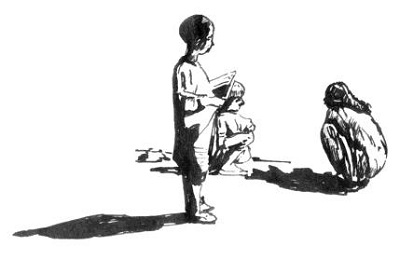
Exercises for Lesson Nine
- Make sentences in the possessive case from the following pairs of words.
For example, for the pair احمد / کور - ahmad / kor, you would write:
| daa du ahmad kor day. | دا د احمد کور دے. |
- Fill in the blanks in the following sentences with the present tense form of the infinitive listed above the sentence.
- Say the following sentences and alter the numbers and pronouns:
| I am the brother of seven sisters. | زۀ د اوؤ خوېندو ورور يم. |
| I am the father of twelve children. | زۀ د دولسو بچو پلار يم. |
| I am the husband of four wives. | زۀ د څلورو ښځو خاوند يم. |
Finding out more about things and activities
👆 You can multiply language learning easily using pictures. The following pages can be photocopied and taken with you. Each picture can be a trigger for conversation. Record some of the responses and analyse them later with your helper. You can also use the illustrations in Picture It in Dari and Pashto to generate more conversations with your helper.
- Some useful phrases to find out about things are:
| de ta pukhtó ke tsu waaye? | What is this called in Pukhto? | دې ته پښتو کښې څۀ وائې؟ |
| da ___ du tsu pu kaar raazee? | What is ___ used for? | دا ___ د څۀ په کار راځى؟ |
| tu pu khpula ___ istimaalawúlay she? | Do you know how to use a ___? | تۀ په خپله ___ استعمالولے شې؟ |
| da ___ graan day / graana da? | Is ___ (masc) expensive? | دا ___ ګران دے؟ |
| da ___ graan day / graana da? | Is ___ (fem) expensive? | دا ___ ګرانه ده؟ |
| ___ tsok istimaalawée? | Who uses a ___? | ___ څوک استعمالوى؟ |
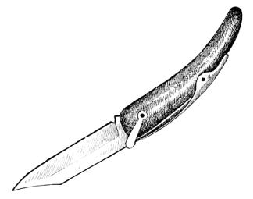
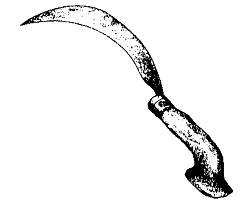
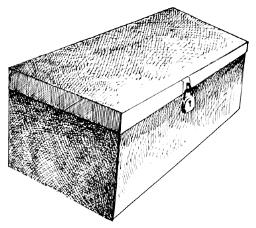
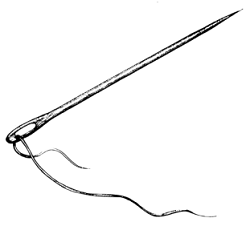
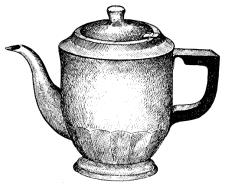
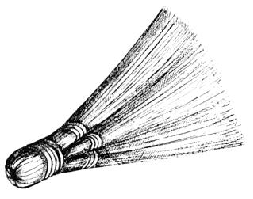

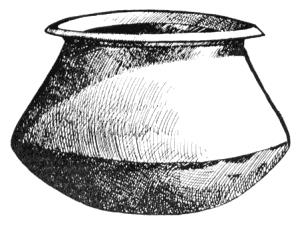
- Some useful phrases to explore activities:
| haghá tsu kawée? | What is he doing? | هغه څۀ کوى؟ |
| tu daa kar tsínga kawe? | How do you do this work? | تۀ دا کار څنګه کوې؟ |
| maa ta daa kaar kawúl óokhaaya. | Show me how to do this work. | ما ته دا کار کول وښايه. |
| de kaar ta tsu wáaye? | What is this job called? | دې کار ته څۀ وائې؟ |
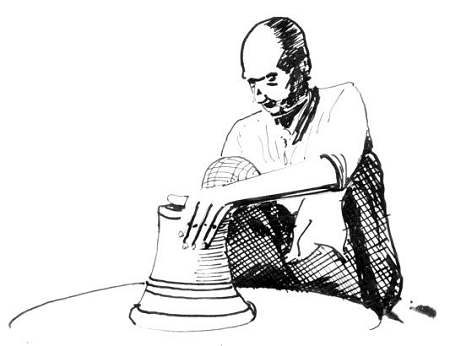
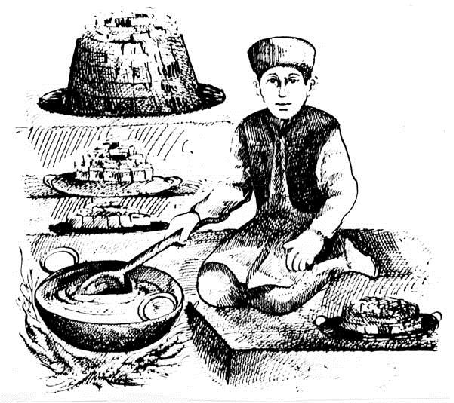
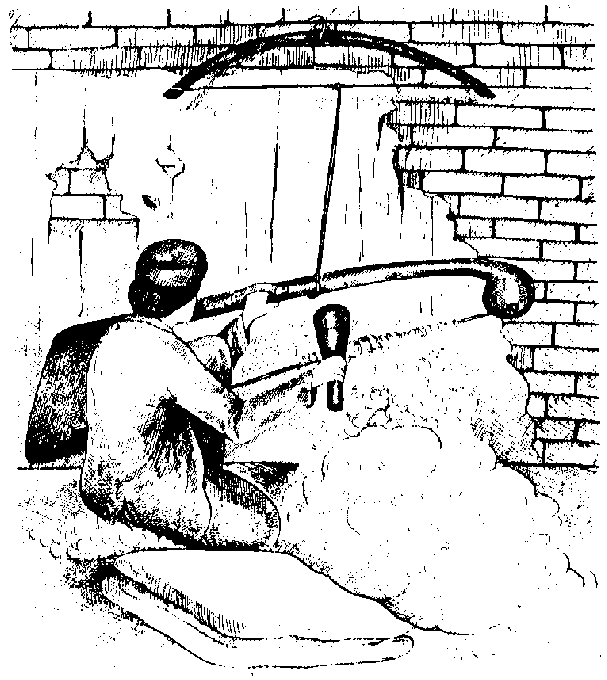
NOTE:
It is best to keep on using the name of a new thing in your questions. The more you use it, the more it “sticks” in your memory.